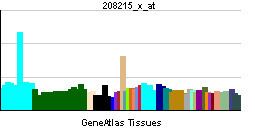Entrez 1815 | Ensembl n/a | |
 | ||
External IDs MGI: 94926 HomoloGene: 20215 GeneCards: DRD4 | ||
The dopamine receptor D4 is a G protein-coupled receptor encoded by the DRD4 gene.
Contents
- Genetics
- 48 base pair VNTR
- Novelty seeking
- Cognitive development
- Agonists
- Antagonists
- Inverse agonists
- References
As with other dopamine receptor subtypes, the D4 receptor is activated by the neurotransmitter dopamine. It is linked to many neurological and psychiatric conditions including schizophrenia and bipolar disorder, ADHD, addictive behaviors, Parkinson's disease, and eating disorders such as anorexia nervosa.
It is also a target for drugs which treat schizophrenia and Parkinson disease. The D4 receptor is considered to be D2-like in which the activated receptor inhibits the enzyme adenylate cyclase, thereby reducing the intracellular concentration of the second messenger cyclic AMP.
Genetics
The human protein is coded by the DRD4 on chromosome 11 located in 11p15.5.
There are slight variations (mutations/polymorphisms) in the human gene:
Mutations in this gene have been associated with various behavioral phenotypes, including autonomic nervous system dysfunction, attention deficit/hyperactivity disorder, schizophrenia, and the personality trait of novelty seeking.
48-base pair VNTR
The 48-base pair variable number tandem repeat (VNTR) in exon 3 range from 2 to 11 repeats.
DRD4-7R, the 7-repeat (7R) variant of DRD4, has been linked to a susceptibility for developing ADHD in several meta-analyses and other psychological traits and disorders.
The frequency of the alleles varies greatly between populations, e.g., the 7-repeat version has high incidence in America and low in Asia. "Long" versions of polymorphisms are the alleles with 6 to 10 repeats. 7R appears to react less strongly to dopamine molecules.
The 48-base pair VNTR has been the subject of much speculation about its evolution and role in human behaviors cross-culturally. The 7R allele appears to have been selected for about 40,000 years ago. In 1999 Chen and colleagues observed that populations who migrated farther in the past 30,000 to 1,000 years ago had a higher frequency of 7R/long alleles. They also showed that nomadic populations had higher frequencies of 7R alleles than sedentary ones. More recently it was observed that the health status of nomadic Ariaal men was higher if they had 7R alleles. However, in recently sedentary (non-nomadic) Ariaal those with 7R alleles seemed to have slightly deteriorated health.
Novelty seeking
Despite early findings of an association between the DRD4 48bp VNTR and novelty seeking (a normal characteristic of exploratory and excitable people), a 2008 meta-analysis compared 36 published studies of novelty seeking and the polymorphism and found no effect. The meta-analysis of 11 studies did find that another polymorphism in the gene, the -521C/T, showed an association with novelty seeking. While human results are controversial, an increasing body of animal evidence has linked DRD4 variants with novelty seeking, e.g.,,, and new evidence suggests that human encroachment may exert selection pressure in favor of DRD4 variants associated with novelty seeking. Novelty-seeking behavior is probably mediated by several genes, and the variance attributable to DRD4 by itself is not particularly large.
Cognitive development
Several studies have suggested that parenting may affect the cognitive development of children with the 7-repeat allele of DRD4. Parenting that has maternal sensitivity, mindfulness, and autonomy–support at 15 months was found to alter children's executive functions at 18 to 20 months. Children with poorer quality parenting were more impulsive and sensation seeking than those with higher quality parenting. Higher quality parenting was associated with better executive control in 4-year-olds.
